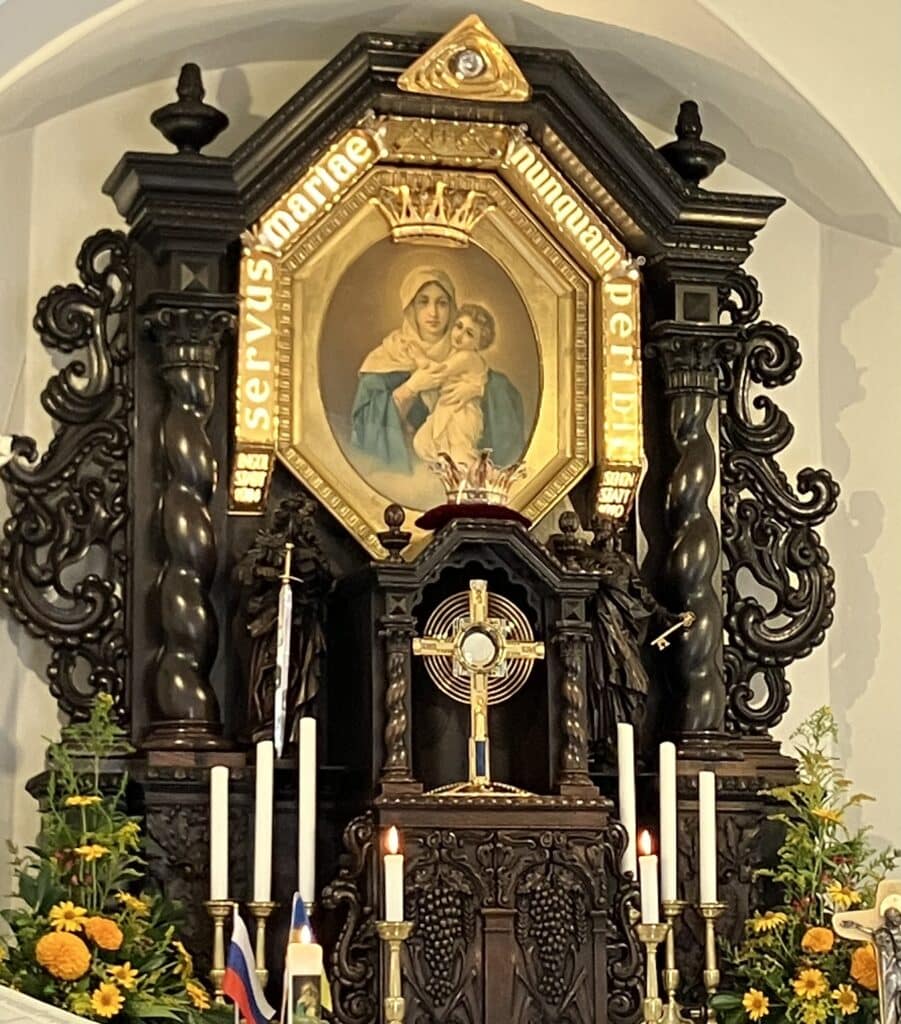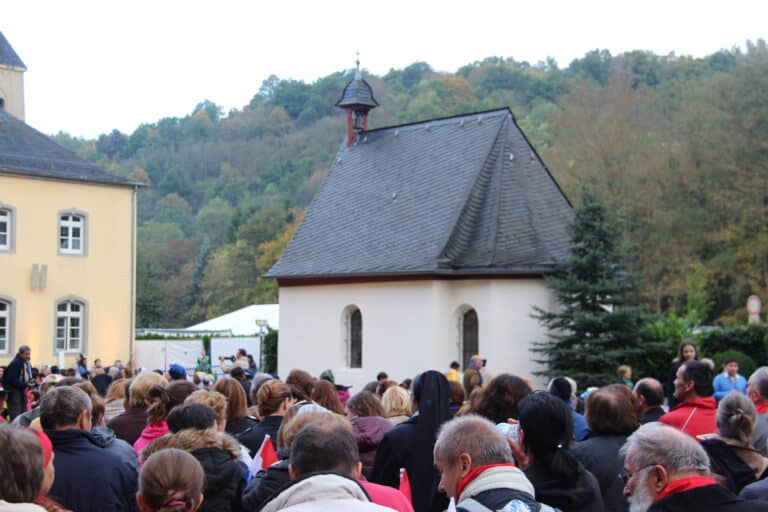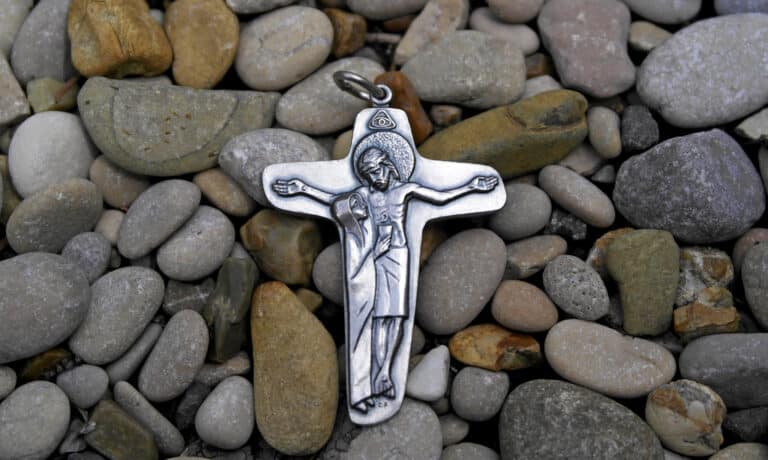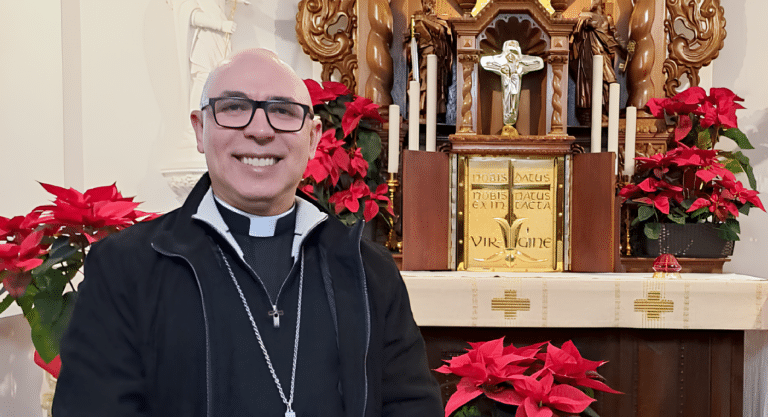And the Heavens burst into song…
“And the Heavens burst into song;
the angels with joy sang along.
Creation was silent with awe
for God had called you home!” (1)
This refrain of a popular Schoenstatt Song recalls a homily from the first half of the seventh century which testifies to the understanding of the Palestinian Church on the end of Mary’s earthly life. There we read: “The assumption of the body of the holy one, …, took place on the fifteenth day of August, which is the sixth day of the month of Mesore. And there was joy in heaven and on earth, as the angels struck up the hymn, while human beings glorified the mother of the King of Heaven, who had herself glorified the human race.” (2)
Tribute to the handmaid of the Lord
It is fitting, therefore, that today, August 15, heaven and earth again join to give tribute to the handmaid of the Lord whose earthly pilgrimage culminated in her being assumed in body and soul into heaven. Indeed, how could her body in whom “the Word was made flesh” be exposed to the corruption of the grave?
But Marian dogmas do not only praise the privileges given to Our Lady. Schoenstatt’s founder considered it a pedagogical opportunity that the two dogmas of the Immaculate Conception and Assumption were articulated and pronounced in our time (3)He emphasized that they convey a “compendium of all great catholic truths,”(4) , in particular concerning the God-willed image of the human person. (5) In 1941, nine years before the solemn proclamation of the dogma of the Assumpta, Father Kentenich explained that in her, who is in heaven with body and soul, we honor the ideal of the fully redeemed person. (6)
What does the dogma of the Assumption tell us?

“What does the dogma of the …bodily assumption of the Mother of God into heaven tell us?” Our father and founder directed this question to the delegates of the October Week 1950, two weeks before the solemn proclamation of the dogma. The answer he gave then is valid still today: Like Mary “each body … is intended and called by God to bear Christ; each body is intended and called by God in the future to partake like … the Mother of God … in the glory of heaven. Obviously … these truths are threatened to such a degree nowadays that God had to apply the means of a dogma.” (7)
Perhaps this is the reason Pius XII promulgated the dogma of the Assumption on November 1, 1950, the Solemnity of All Saints, not on August 15. The Assumption of Mary is a promise of immortality for all of us. It highlights the unity of body and soul, their respective dignity and fulfillment of which we speak in the Creed. As the eschatological icon (CCC 972) Mary is “the realization of the ideal of a humanly perfected personality,” (8) and therefore of all those striving for everyday sanctity.
Mirroring ourselves in the Assumpta
Mirroring ourselves in the Assumpta can teach us important principles concerning the ars vivendi and moriendi. Father Kentenich summarized them as three imperatives:
1. Take care that like Mary your death will be a death of love and longing!
2. Do not forget the transitoriness of all earthly things!
3. Remember your glorification in heaven! (9)
We know that “[Mary] did not lay aside her salvific duty when she was taken up to heaven. … [Rather], by her maternal love she cares for the brethren of her son who still journey on earth.” (10) As our mother and educator she helps us from her shrines to become “walking and acting images of Mary”, (11)
so that at the end of our lives she can deliver us to heaven, our true home. There we finally realize the personal ideal that has governed all our hopes and efforts on our journey heavenwards and be forever God’s true likeness!
In this spirit, with awe and gratitude for God’s bountiful love, (12) let us join the angels by singing the fifth verse of the above mentioned song:
“In Schoenstatt you live in our small paradise;
it’s heaven to be with you in the shrine.
Our longing for heaven increases much more
since that is what God has created us for.”

[1] Maria Apac, And the Heavens … Rockport, Texas, 1979.
[2] Theoteknos, Bishop of Livias, “On the Dormition,” in Brian Daley, S. J., On the Dormition of Mary: Early Patristic Homilies (Crestwood, NY: St. Vladimir’s Seminary Press, 1998), 74. This homily was discovered at St. Catherine’s monastery on Mount Sinai in 1955.
[3] Cf. October Week 1950, 26f., 31.
[4] Ibid, 100.
[5] Cf. Marianisch-priesterliche Lebensweisheit. Priesterexerzitien. August 1933, 41.
[6] Der Marianische Priester. Priesterexerzitien 1941. Manuscript 172pp, here 15.
[7] October Week 1950, 113.
[8] Menschheitsschuld im Lichte der Immaculata. 8. December 1929. Manuscript, 5. Cf. Aus dem Glauben Leben 1962-65, X, 136.
[9] The Marian Priest, 1941, 102. Cf. Heavenwards, Compline.
[10] Vatican II. Dogmatic Constitution on The Church Lumen Gentium, November 21, 1964, 62.
[11] Cf. Marian Instrument Piety. Composed in Dachau 1944. Abridged translation. Waukesha WI 1992, 93.
[12] Cf. Pius XII, Apostolic Constitution Munificentissimus Deus – The Most Bountiful God, defining the Dogma of the Assumption, November 1, 1950.



